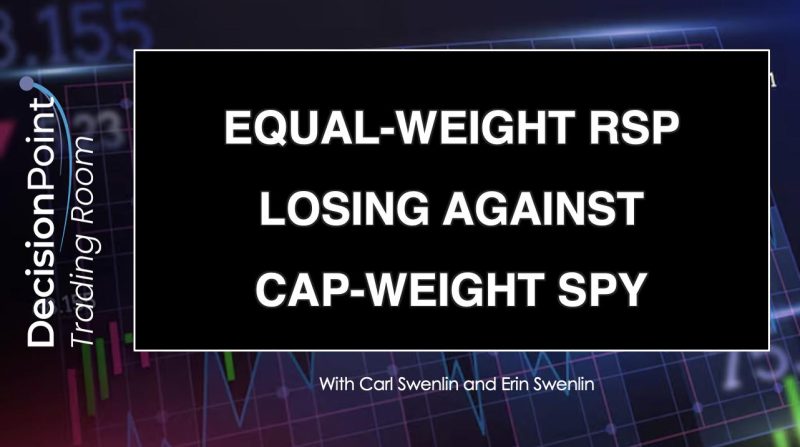
Game-Changing Strategy: How DP Trading Room Flips the Script on Cap-Weighted SPY
In the world of financial markets, the debate around different index weighting methodologies has always been a topic of significant interest and discussion. One fundamental comparison lies between equal-weighted and capitalization-weighted indices, each with its own set of advantages and disadvantages. As investors seek optimal ways to structure their portfolios, understanding the distinctions and trade-offs between these two approaches becomes essential.
Equal-weighted indices provide an alternative to traditional capitalization-weighted indices by assigning equal weight to all components within the index. This approach aims to avoid concentrated holdings in large companies that dominate capitalization-weighted indices, such as the SPY. However, the performance of equal-weighted indices can fluctuate significantly compared to their capitalization-weighted counterparts, as smaller companies may experience more volatility.
Proponents of equal-weighted indices argue that this methodology offers a more diversified exposure to the market, reducing the impact of single company performance on the overall index. Additionally, equal-weighted indices can potentially outperform capitalization-weighted indices during bull markets, as smaller companies may experience periods of rapid growth that are not fully reflected in traditional indices.
On the other hand, capitalization-weighted indices like the SPY are widely used and have become the benchmark for many investors. These indices assign weights to components based on their market capitalization, giving greater influence to larger companies. While this approach may lead to concentration risk in the index, it also reflects the market’s collective assessment of each company’s value. Capitalization-weighted indices are often seen as more representative of the overall market’s performance.
Critics of capitalization-weighted indices point to the fact that they can be skewed towards overvalued companies, particularly during market bubbles. The heavy weighting of these companies within the index can increase the index’s vulnerability to significant losses during market corrections. Moreover, the dominance of a few large companies within a capitalization-weighted index can limit diversification opportunities for investors.
When considering whether to use equal-weighted or capitalization-weighted indices in their investment strategy, investors must carefully assess their risk tolerance, investment objectives, and time horizon. Equal-weighted indices may offer a more balanced exposure to the market and potentially higher returns in certain market conditions, but they also come with higher volatility and tracking error. In contrast, capitalization-weighted indices provide a more stable and widely accepted benchmark, but can be influenced by the performance of a few key players.
Ultimately, the choice between equal-weighted and capitalization-weighted indices depends on an investor’s specific preferences and investment goals. By understanding the nuances and implications of each indexing methodology, investors can make informed decisions to construct a portfolio that aligns with their overall strategy and risk profile.
